Is your regular auto detail routine leaving you wanting more? Are you struggling to restore that like-new luster your car once had? You can try as many topical remedies as you can find, but you won’t be able to fix the issue without automotive paint correction.
Correcting your vehicle’s paint isn’t an easy task. It’s the kind of treatment that even the most experienced car enthusiasts prefer to leave to the professionals. You don’t want to risk further damage to your car’s appearance.
What is paint correction? How do the pros do it? Read on to learn everything you need to know.
Table of Contents
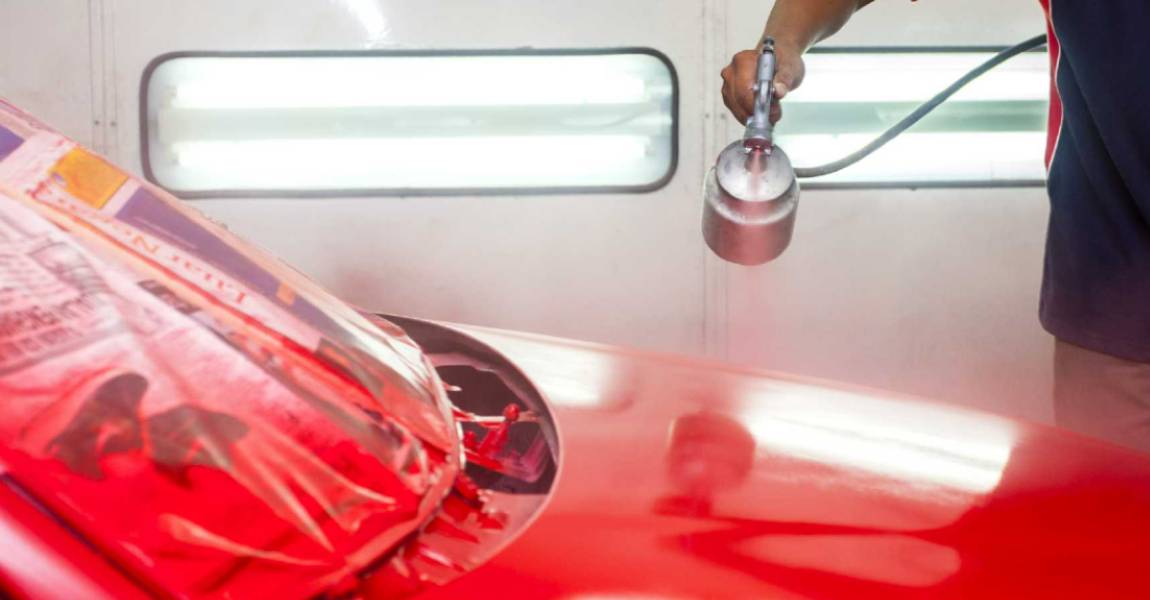
What is Paint Correction?
A car’s paint job has a few layers. The first is primer. This helps the middle layer, a color base coat, bind to your car.
A third layer, called clear coat, goes overtop the base coat. A clear coat helps form a protective shell that guards the base coat layer.
Auto paint correction is the process of smoothing out or removing a clear coat to fix cosmetic imperfections and restore your paint job to a like-new state. These imperfections could be incredibly noticeable, like large scratches, or visible only under direct light.
To correct the paint, your detailer will have to use a machine polisher and a special compound to cut into your car’s clear coat. It takes a steady, skilled hand to do this job, and a mistake could ruin the clear coat. All car owners should trust the process to a certified professional.
Certain products can mask paint imperfections by filling in damage. While some motorists might notice a small improvement in the look of their paint jobs, using these products is not technically paint correction.
Proper paint correction refers to the process of smoothing the clear coat layer.
When Does a Car Need It?
A car needs paint correction when something damages its clear coat. Several things can cause this, and its effects are usually quite noticeable.
Water Marks
Watermarks are a common sign of paint damage. These speckled patterns appear when the water has eaten away at the clear coat.
It’s especially problematic when the water contains salt, a significant amount of minerals, or has been allowed to sit in the sun. In these situations, it’s even easier for water to penetrate a clear coat. Paint correction is the only way to fix this damage.
Swirl Marks
Swirl marks are usually a sign of improper washing techniques.
Maybe you used an abrasive soap, dried with a rough towel, or scrubbed the car in a circular pattern. No matter the cause, swirl marks are the sign of an uneven layer of clear coat.
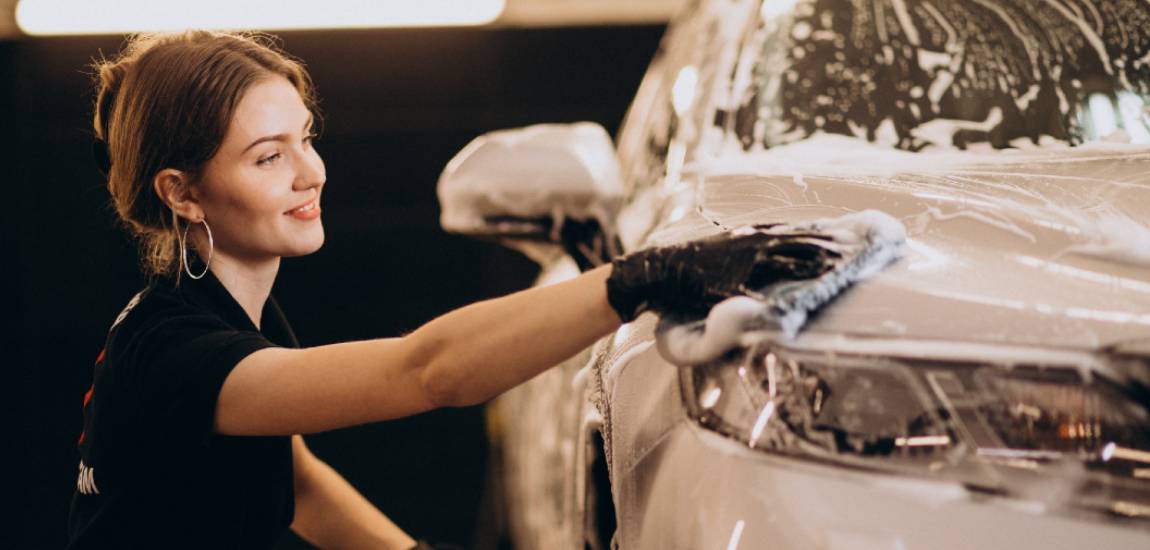
Scratches
This is an obvious sign that you need paint correcting services. Paint correction is the only way to remove scratches or swirl marks, big or small, from your car’s painted surface. Road debris and brushes with other objects are the typical causes of scratches.
Environmental Damage
Environmental damage to a car’s paint comes from a few different sources.
Bird droppings are the bane of a well-detailed car. You have to clean them off right away.
Tree sap, acid rain, and bug residue are other contaminants that can damage a car’s paint job.
If you’re not diligent, all of these environmental factors can cause paint damage.
Oxidation
UV rays from the sun can cause the oxidation of a car’s paint. You’ll notice it if your car has taken on a dull, chalky appearance.
Before Paint Protectants
Many vehicles need paint correction before you can have a paint protectant like Ceramic Pro ceramic coating installed. If you skip this process, any damage will be visible through the coating and it may not properly adhere to your car.
Paint correction is also recommended before applying a clear bra. While the adhesive used in some high-end products can fix some clear coat issues, it’s always best to have corrections performed.
Stages of Paint Correction
There are three different levels of paint correction. The kind your vehicle needs depends on the severity of the paint damage. At each level, a different combination of buffing pads and cutting compounds are used.
All stages start with a thorough hand washing of your car and a clay bar treatment to remove debris from the paint job.
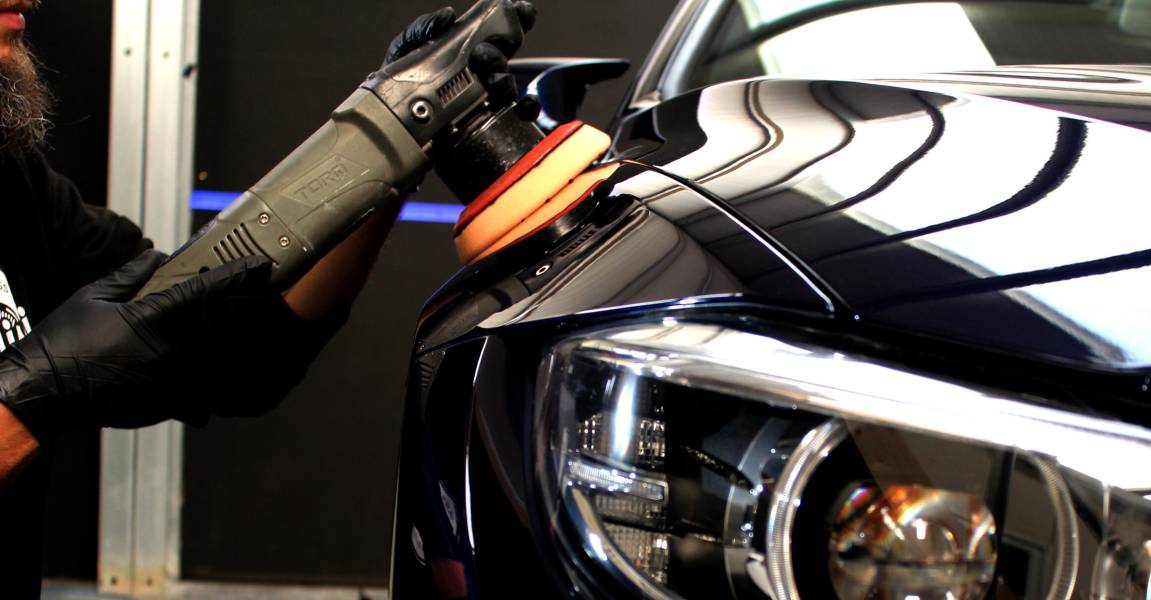
Stage 1
Stage 1 correction is for fixing minor cosmetic damage to your vehicle’s paint. Only a finishing pad and finishing compound will be used.
The purpose of stage 1 correction is to refine paint jobs and correct paint defects. Up to 70% of paint imperfections can be fixed with this level of correction.
Stage 2
This level is for moderate damage. Most swirl marks and scratches can be rectified by stage 2 correction.
Your detailer will use two different pads and compounds if you require this level of paint correction. They’ll need to use one set of compounds and pads that are abrasive enough to make a decent-sized cut in your clear coat layer.
Stage 2 correction can remedy up to 90% of paint imperfections.
Stage 3
Cars that need stage 3 correction have heavy swirl marks or incredibly deep scratches.
This correction level starts with wet sanding. A detailer uses different grades of sandpaper and detergent to smooth out the finish of your car. This process can take time, but it’s the only way to fix clear coats with significant defects.
The wet sanding process only evens out the clear coat. After the detailer is finished with it, they perform a stage 2 correction to restore the sheen to your paint job.
How Much Time Does This Take?
Professional detailers are careful to take their time to ensure that the correction process is done right. Rushing through the job produces unsatisfactory results.
One-step correction can usually be performed in a day, while more in-depth work could take several days.
Your detailers will give you an estimate of how long they expect the work to take. It depends on the size of the car and the extent of the damage. If you’re having extensive detailing work performed, expect to leave your car at the shop for about a week.
Protecting Corrected Paint
Once you’ve had your paint corrected, you’ll want to take steps to guard it against future damage. You have a few options for this, but some are much more robust than others.
Wax
Auto enthusiasts have used wax to protect their cars for decades. It makes your paint shine bright and helps keep your car clean.
You can find all kinds of wax and apply it yourself, but you need to keep its limitations in mind. It can’t protect your car from scratches and chemical damage.
It’s also not a long-term solution. Most waxes only offer protection for a few months.
Sealant
Sealants offer a bit more protection than a wax. They can stand up to chemical damage from road salt and bird droppings and produce a glossy shine.
However, sealants can be washed off easily if you’re not careful and still only offer a few months’ worth of protection.
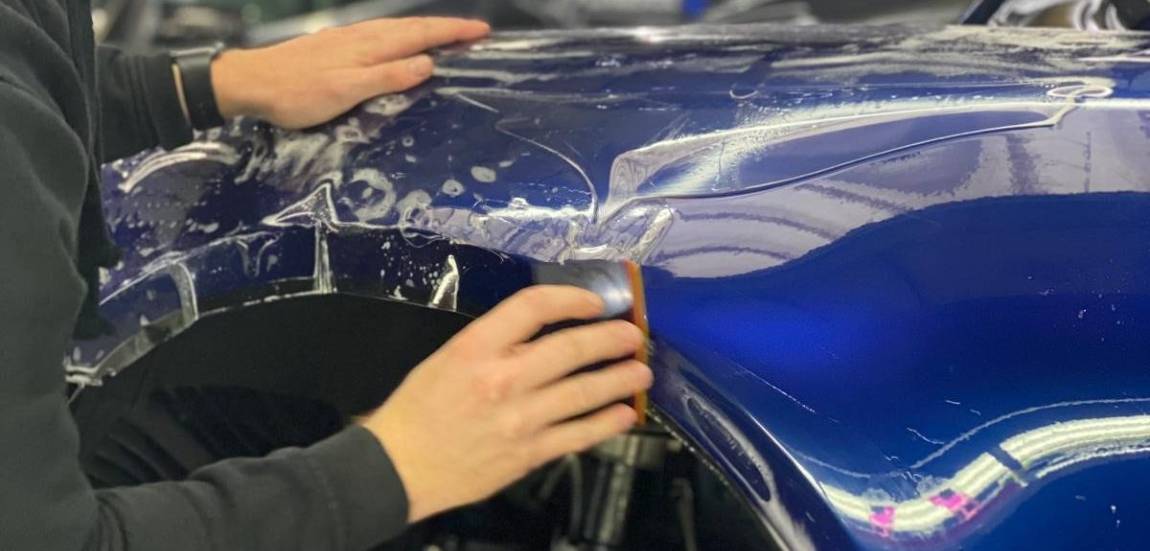
Paint Protection Film
Paint protection film (also known as PPF or clear bra) offers some of the most robust protection for your car. It’s usually applied to high-impact areas like the hood and front end of your vehicle.
PPF offers protection from chemical damage, road debris, and light scratches. Most clear bras last up to five years.
Ceramic Coating
Ceramic coatings are a high-tech paint protectant. It bonds to your car’s paint and forms a water-resistant barrier.
These coatings will protect your vehicle from all kinds of chemical damage and force water to bead off the surface of your car, reducing the likelihood of water spots and the damage they cause.
Expect to get around five years from your ceramic coating, but a properly maintained high-end product can last even longer.
Choosing a Paint Protectant
Some might prefer waxes and sealants due to their budget-friendly nature, but those who invest in paint correction should pursue more in-depth protection. These products won’t guard your car against many of the things that damage the clear coat.
If you’re serious about keeping your vehicle looking good, you need to spring for ceramic coating. Its hydrophobic nature means you won’t have to worry about water spotting and swirl marks.
If you desire even more protection, you can install PPF on top of a ceramic coating.
A Denver Detailer You Can Trust
Paint correction is the only way to restore the shine to a car with a damaged paint job. What is paint correction? It’s the process of removing and smoothing out a clear coat to correct cosmetic imperfections.
There are three different levels of paint correction services. Some cars only need minor work, but others will need wet sanding to correct their paint job.
Looking for a detailer in Denver, CO? Pro-tech Auto Shield can perform any level of paint correction and install your choice of paint protectant.
Our skilled technicians are ready to get to work. Reach out to us to see how we can help you.




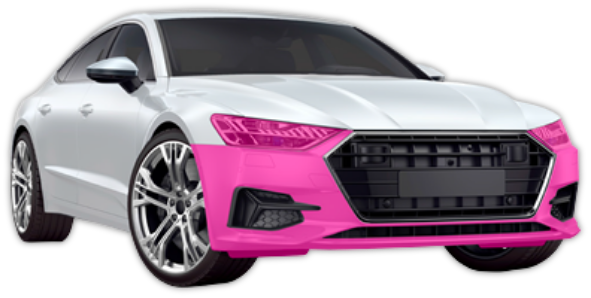
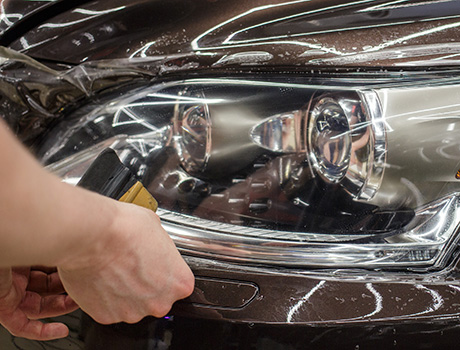
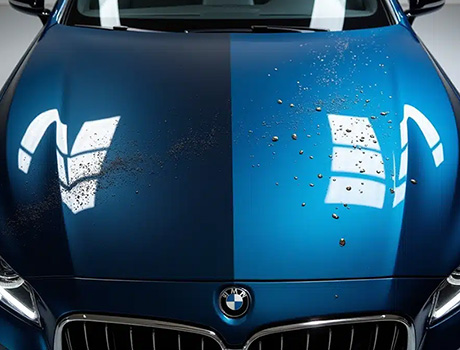
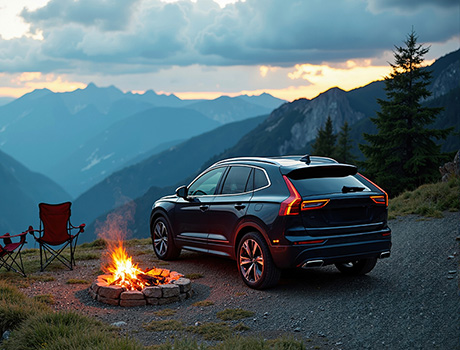
WHAT OUR CLIENTS ARE SAYING